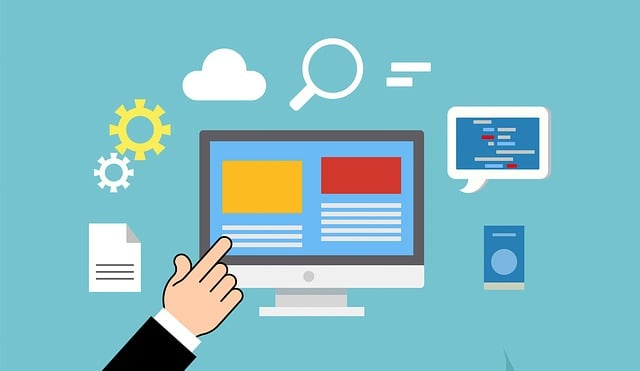Building a website is just the beginning of a digital journey. To ensure its smooth functioning and longevity, regular maintenance is paramount. However, many website owners often overlook the crucial aspect of determining the monthly maintenance costs. In this comprehensive guide, we will walk you through the process of evaluating and understanding the expenses associated with website maintenance. From hosting and domain fees to security and content updates, we will delve into every aspect that affects the overall financial commitment required to keep your website in top shape. So, let’s uncover the hidden costs and take the guesswork out of website maintenance!
Why Website Maintenance Matters
Maintaining a website is not a mere option; it is an essential investment in the success and sustainability of your online presence. Regular maintenance ensures that your website remains functional, secure, and up-to-date, providing an optimal user experience for visitors. Here are a few reasons why website maintenance matters:
Firstly, security concerns top the list. Websites are vulnerable to various security threats, including malware attacks, hacking attempts, and data breaches. Regular maintenance helps safeguard your website and its sensitive information against these risks, minimizing the chances of security breaches.
Secondly, website performance directly impacts user experience. Slow loading times, broken links, and outdated content can drive visitors away, negatively affecting your online reputation and conversions. Routine maintenance tasks, such as optimizing code, updating plugins, and checking for broken links, contribute to a seamless user experience.
How to Determine Monthly Maintenance Expenses for Your Website
Now that we understand the importance of website maintenance, let’s delve into the key factors that influence the monthly costs.
Web Hosting and Domain Fees
Web hosting and domain fees are the foundational costs of any website. Web hosting is the service that enables your website to be accessible on the internet, while a domain name serves as the address where visitors can find your site. These services typically come with recurring costs that vary depending on the provider and the specific hosting plan you choose.
Web hosting costs depend on factors such as server type (shared, VPS, dedicated), storage space, bandwidth, and additional features like SSL certificates. Similarly, domain name registration fees vary based on the domain extension (.com, .org, .net, etc.) and its availability. It is crucial to research different hosting providers, compare plans, and consider your website’s specific requirements to determine the most suitable option for your budget.
Now that we have covered the foundational costs, let’s explore the ongoing maintenance tasks that impact the monthly expenses.
Content Management System (CMS) Updates
Most websites rely on Content Management Systems (CMS) like WordPress, Drupal, or Joomla to manage their content effectively. CMS platforms regularly release updates that address security vulnerabilities, improve performance, and introduce new features. While CMS updates are often free, they require time and expertise to install and ensure compatibility with your website’s themes and plugins.
It is essential to keep your CMS up to date to maintain optimal performance and security. Ignoring updates may expose your website to potential risks and compatibility issues with other components. Depending on the complexity of your website and the number of plugins and themes installed, you might need professional assistance or allocate time for DIY updates, impacting your maintenance costs.
Now that we have covered CMS updates, let’s explore another critical aspect of website maintenance: backups.
Regular Backups
Backups act as a safety net, allowing you to restore your website to a previous working state in case of unforeseen events such as hacking, server failures, or accidental data loss. Regular backups are an integral part of website maintenance, ensuring that you can recover your website swiftly and efficiently.
Depending on your website’s complexity and size, backups can be performed manually or automated through plugins or hosting providers. Manual backups involve manually copying and storing your website files and database periodically. This option requires technical expertise and diligent execution. On the other hand, automated backups can be scheduled to run at regular intervals, ensuring the latest version of your website is always securely stored.
The frequency of backups depends on the frequency of content updates and the criticality of your website’s data. For websites with frequent updates or e-commerce platforms handling customer information, daily or real-time backups are recommended. However, for static websites with infrequent updates, weekly or monthly backups might be sufficient. It’s crucial to assess your website’s needs and find a backup solution that aligns with your maintenance budget.
With backups in place, let’s explore the significance of regular security checks and updates.
Security Measures and Updates
Maintaining a secure website is paramount in today’s digital landscape, where cyber threats are rampant. Regular security checks and updates play a vital role in protecting your website and its visitors from malicious activities. Here are a few key security measures that impact your monthly maintenance costs:
Security Plugins: Utilizing reputable security plugins can help safeguard your website by providing features like malware scanning, firewall protection, and brute-force attack prevention. While many security plugins offer free versions, advanced security features and support often come with premium subscriptions, which may incur monthly or annual costs.
SSL Certificates: An SSL certificate encrypts the communication between your website and its visitors, ensuring that sensitive information remains secure. SSL certificates are essential for e-commerce websites or any site that collects user data. While some hosting providers offer free SSL certificates, others may charge a fee for more advanced certificates or additional security features.
Vulnerability Scans and Penetration Testing: Regular vulnerability scans and penetration testing help identify weaknesses in your website’s security infrastructure. These tests can be conducted manually or through specialized tools or services. While manual tests require expertise or hiring security professionals, automated tools or services may come with monthly subscription fees.
Now that we have covered security measures, let’s move on to website performance optimization.
Performance Optimization
Website performance is crucial for providing a smooth user experience and maximizing conversions. Slow-loading websites can frustrate visitors and lead to higher bounce rates. Optimizing your website’s performance should be an ongoing maintenance task, and it can impact your monthly costs in several ways:
Caching Plugins or Content Delivery Networks (CDNs): Caching plugins and CDNs help reduce page load times by storing static elements of your website, such as images and CSS files, closer to the user. While some caching plugins are available for free, more advanced features or premium CDNs might come with subscription plans that incur monthly costs.
Image Compression and Optimization: Large image files can significantly slow down your website. Optimizing and compressing images without compromising quality can enhance page load times. Image optimization tools or services may require monthly or annual subscription fees, depending on the level of optimization and number of images processed.
Code Optimization and Minification: Optimizing your website’s code and minimizing unnecessary characters can improve its performance. While basic code optimization techniques can be implemented manually, advanced optimization or minification tools might come with associated costs.
Moving forward, let’s discuss the importance of regular website content updates and how they impact maintenance expenses.
Content Updates and Maintenance
Keeping your website’s content fresh and up to date is essential for engaging visitors and maintaining relevance. Regular content updates can range from adding new blog posts, updating product information, refreshing visuals, or revising outdated content. While the cost of content updates can vary depending on your approach
While the cost of content updates can vary depending on your approach and resources, there are a few factors to consider:
Content Creation: If you outsource content creation to freelance writers or agencies, you need to budget for their fees. The cost will depend on the length, complexity, and expertise required for the content. Alternatively, if you create content in-house, you need to consider the time and resources allocated to content production.
Graphic Design and Visual Updates: Updating visuals and graphics on your website, such as banners, infographics, or product images, may require the assistance of a graphic designer. Their fees can vary based on the complexity and quantity of visuals needed.
Content Management Systems: Some content management systems, especially those designed for e-commerce platforms or complex websites, require ongoing licensing fees. These fees cover access to advanced content management features, technical support, and updates. Consider the costs associated with your chosen CMS when determining your maintenance expenses.
With content updates covered, let’s move on to the importance of monitoring and analyzing website performance.
Monitoring and Analytics
Monitoring and analyzing your website’s performance are essential to identify issues, track user behavior, and make data-driven improvements. Here are a few elements to consider:
Web Analytics Tools: Implementing web analytics tools like Google Analytics allows you to gather valuable data on website traffic, user demographics, behavior, and conversions. Basic analytics tools are usually free, but more advanced features or enterprise-level analytics platforms may come with associated costs.
Uptime Monitoring: Ensuring that your website is accessible to visitors is crucial. Uptime monitoring services or tools notify you of any downtime incidents or performance issues, allowing you to address them promptly. Depending on the provider and the level of monitoring required, these services might involve monthly or annual subscription fees.
Performance Testing: Regularly testing your website’s performance, such as load times and responsiveness, helps identify bottlenecks and areas for improvement. Performance testing tools or services may come with costs depending on the level of testing and support required.
Now let’s explore the importance of user feedback and support for maintaining a successful website.
User Feedback and Support
Providing excellent user experience and addressing user feedback is essential for website maintenance. This section covers two critical aspects:
User Feedback Tools: Implementing user feedback tools, such as surveys or feedback forms, allows you to gather insights and suggestions directly from your website visitors. Some tools offer free plans with limited features, while more advanced feedback platforms may require monthly subscriptions.
Customer Support: Offering prompt and efficient customer support is vital for user satisfaction. Depending on the complexity of your website and the level of support required, you may need to allocate resources for customer support staff or consider outsourcing support services. The cost of customer support will depend on factors such as staff salaries or fees for third-party support services.
Lastly, let’s explore the significance of regular website audits and the impact they have on maintenance costs.
Website Audits and Evaluations
Regular website audits and evaluations are crucial for identifying areas of improvement, ensuring compliance with best practices, and maintaining a strong online presence. Key aspects to consider are:
SEO Audits: Search engine optimization (SEO) audits analyze your website’s performance in search engine rankings, on-page optimization, keyword usage, and overall SEO health. Depending on your website’s size and complexity, SEO audits can be done in-house or by hiring SEO professionals or agencies, incurring associated costs.
Accessibility and Compliance Audits: Ensuring your website meets accessibility standards and complies with relevant regulations (such as GDPR or ADA) is essential. Accessibility and compliance audits may involve specialized tools or third-party services that assess your website’s accessibility and compliance levels. These audits help identify areas of improvement and ensure that your website is inclusive and compliant. Costs associated with accessibility and compliance audits will vary depending on the scope and complexity of your website.
Usability Testing: Conducting usability tests allows you to evaluate how users interact with your website and identify potential usability issues. Usability testing can be done through in-person sessions, remote testing, or specialized usability testing tools. Costs may include recruiting participants, compensating them for their time, and potentially hiring usability experts or agencies to conduct the tests.
By conducting regular website audits and evaluations, you can ensure that your website remains optimized, user-friendly, and aligned with industry standards.
Conclusion:
Determining the monthly maintenance costs for your website involves considering various factors, from foundational expenses like hosting and domain fees to ongoing tasks like updates, backups, security measures, content management, performance optimization, monitoring, user support, and audits. By taking a comprehensive approach and accounting for these factors, you can better estimate the financial commitment required to keep your website in optimal condition.
Remember, website maintenance is not just about avoiding unexpected issues but also about enhancing user experience, maximizing conversions, and staying competitive in the digital landscape. By investing in regular maintenance and allocating the necessary resources, you ensure that your website remains secure, functional, and engaging for visitors.
So, don’t overlook the importance of determining your monthly maintenance costs. Take proactive steps to evaluate and budget for the expenses associated with website maintenance, and you’ll reap the rewards of a well-maintained, successful online presence.



